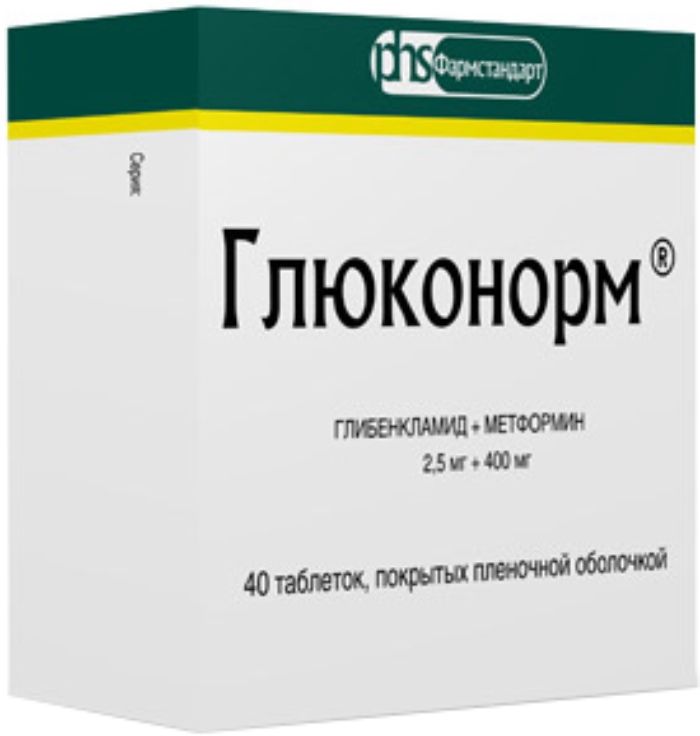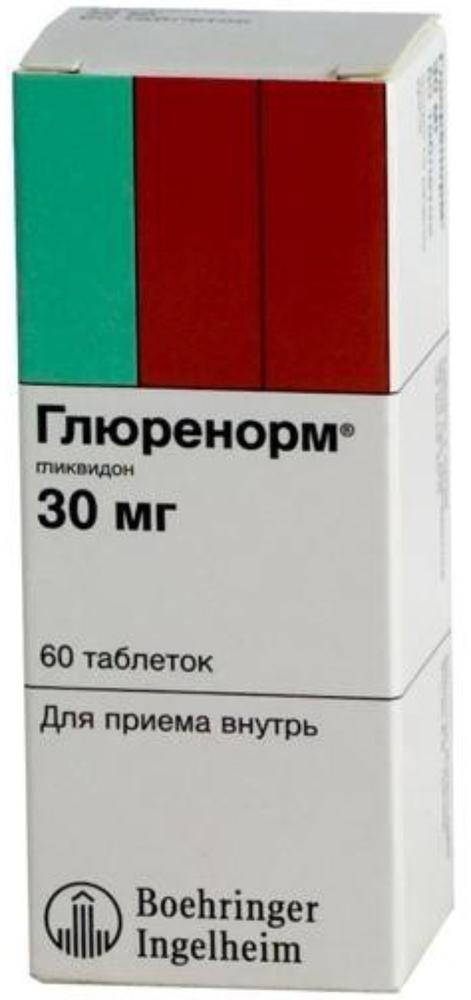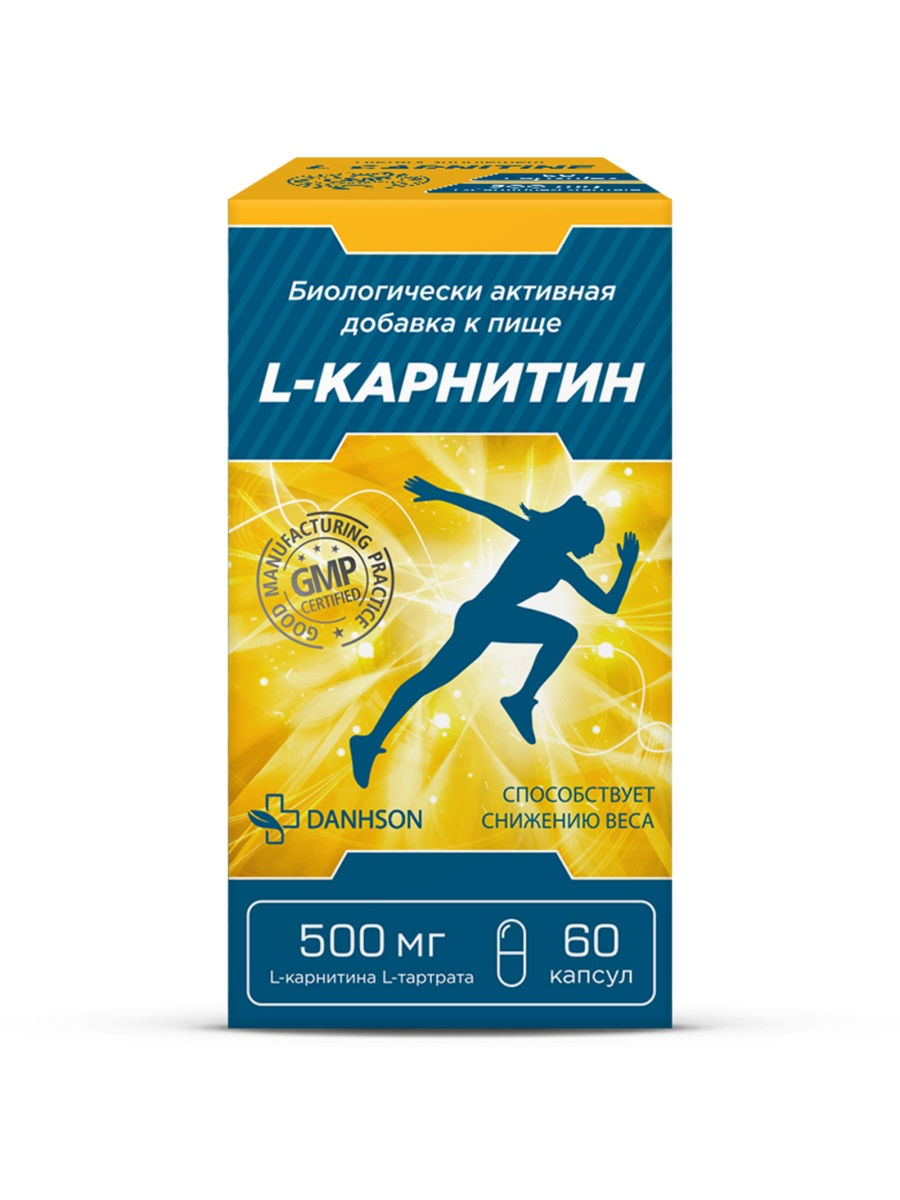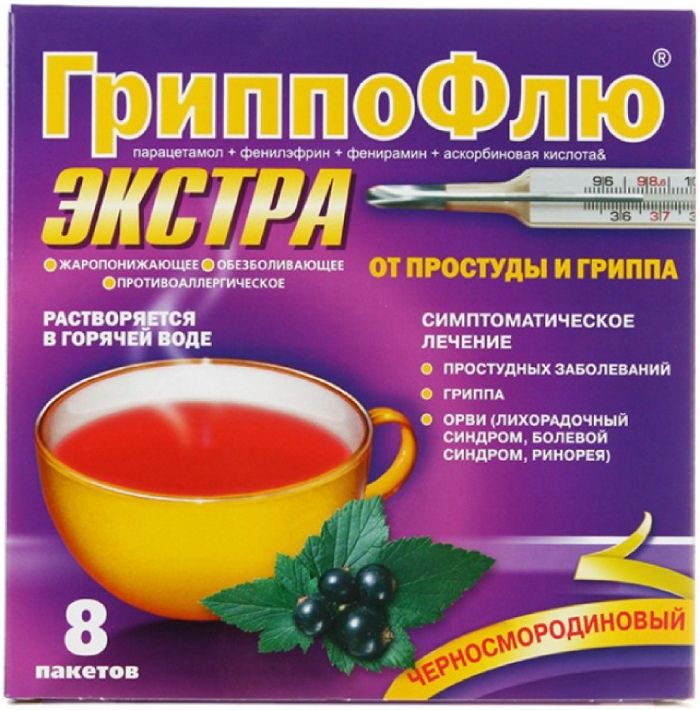- No products in the cart.
Glyukonorm Tab n / a film about 2.5 mg + 400 mg 40 pieces
$4.94
Glyukonorm Tab n / a film about 2.5 mg + 400 mg 40 pieces
SKU: 01475456031 Categories: Diabetes, Hypoglycemic, Medicaments Tags: metformin + glibenclamide, Pharmstandard
Description
Composition
Active substance:
1 tablet contains: metformin hydrochloride – 400 mg; glibenklamid- 2.5mg ;.
Excipients:
Microcrystalline cellulose, corn starch, colloidal silica, gelatin, glycerol, magnesium stearate, talc purified, sodium croscarmellose, sodium carboxymethyl starch, tsellatsefat diethylphthalate.
Description:
White round tablets, biconvex, film-coated.
Product form:
Tablets, film-coated, 2.5 mg + 400 mg.
10, 20 or 30 tablets in blister Al / PVC.
1, 2, 3, 4 blisters with instruction for use in a cardboard box.
Contraindications
Hypersensitivity to metformin, glibenclamide or other derivatives of sulfonylureas, and also to the auxiliary substances; type 1 diabetes; diabetic ketoacidosis, diabetic precoma, diabetic coma; hypoglycemia; severe renal impairment; acute conditions that may lead to changes in renal function: dehydration, severe infection, shock; acute or chronic diseases accompanied by tissue hypoxia: cardiac or respiratory failure, recent myocardial infarction, shock; liver failure; porphyria; pregnancy, breast-feeding; concomitant use of miconazole; infectious diseases, major surgery, trauma, extensive burns and other conditions requiring insulin therapy; chronic alcoholism, acute alcohol intoxication; lactic acidosis (including history); use for at least 48 hours before and 48 hours after the radioisotope or radiological examinations with the introduction iodinated contrast material; compliance hypocaloric diets (less than 1000 kcal / day).
Do not use the drug in patients older than 60 years, performing heavy physical work, which is associated with an increased risk of developing lactic acidosis.
Carefully
Febrile syndrome, adrenal insufficiency, hypofunction of the anterior pituitary, thyroid disease with impaired its function.
Dosage
2.5 mg + 400 mg
Indications
Type 2 diabetes mellitus in adults: the poor diet, physical exercise and previous therapy with metformin or glibenclamide; to replace two previous therapy drugs (glibenclamide and metformin) in patients with a stable and well controlled blood glucose level.
Interaction with other drugs
Enhance the hypoglycemic effect of the drug angiotensin converting enzyme inhibitors (captopril, enalapril), blockers of H2-histamine receptors (cimetidine), antifungal drugs (miconazole, fluconazole), non-steroidal anti-inflammatory drugs (NSAIDs) (phenylbutazone, azapropazone, oxyphenbutazone), fibrates (clofibrate, bezafibrate ), TB (ethionamide), salicylates, coumarin anticoagulants, anabolic steroids, beta-blockers, monoamine oxidase inhibitors, sulfonamides lasts Actions ceiling elements, cyclophosphamide, chloramphenicol, fenfluramine, fluoxetine, guanethidine, pentoxifylline, tetracycline, theophylline, tubular secretion blockers, reserpine, bromocriptine, disopyramide, pyridoxine, other hypoglycemic drug (acarbose, biguanides, insulin, etc.), allopurinol.
Weaken the effect of barbiturates, steroids, adrenostimulyatorov (epinephrine, clonidine), antiepileptics (phenytoin), blockers “slow” calcium channels, carbonic anhydrase inhibitors (acetazolamide), thiazide diuretics, chlorthalidone, furosemide, triamterene, asparaginase, baclofen, danazol, diazoxide, isoniazid , morphine, ritodrine, salbutamol, terbutaline, glucagon, rifampicin, iodine-containing thyroid hormones, lithium salts, in higher doses – nicotinic acid, chlorpromazine, oral contraceptives and estrogens .
Acidifying the urine Medicines (Ammonium chloride, calcium chloride, ascorbic acid in high doses) enhance the effect by reducing the degree of dissociation and increase the reabsorption of glibenclamide.
Ethanol increases the likelihood of developing lactic acidosis.
Metformin reduces the maximum blood concentration (Cmax) and T1 / 2 of furosemide at 31 and 42.3%, respectively.
Furosemide increased the metformin Cmax by 22%.
Nifedipine increases absorption, Cmax, slows excretion of metformin.
Cationic drugs (amiloride, digoxin, morphine, procainamide, quinidine, quinine, ranitidine, triamterene, and vancomycin), secreted in the tubules, compete for tubular transport system and long-term therapy may increase metformin Cmax by 60%.
Overdose
Overdose or the presence of risk factors can trigger the development of lactic acidosis, since the drug enters metformin. When the symptoms of lactic acidosis (vomiting, abdominal pain, weakness, muscle cramps) should stop taking the drug. Lactic acidosis is a condition that requires urgent medical assistance; treatment of lactic acidosis must be carried out in a hospital. The most effective treatment is hemodialysis.
Overdose may also lead to hypoglycemia due to the presence in the composition of the drug glibenclamide. Symptoms of hypoglycemia: hunger, excessive sweating, weakness, palpitations, pallor, paresthesia oral mucosa, tremor, general anxiety, headache, abnormal sleepiness, sleep disturbances, anxiety, impaired motor coordination, temporary neurological disorders. With the progression of hypoglycemia, patients may lose self-control and consciousness.
When hypoglycemia mild or moderate dextrose (glucose) or sugar solution is taken orally. In case of severe hypoglycemia (loss of consciousness) injected intravenously 40% solution of dextrose (glucose) or glucagon intravenously, intramuscularly, subcutaneously. After recovery of consciousness patient must provide food, rich in carbohydrates, in order to avoid a recurrence of hypoglycemia.
pharmachologic effect
Pharmacological group:
Hypoglycemic agent for oral use (sulfonylurea + biguanide II generation).
Pharmacodynamics:
Glyukonorm® is a fixed combination of two oral hypoglycemic agents of various pharmacological groups: metformin and glibenclamide.
Metformin belongs to the group of biguanides and reduces the level of glucose in the serum by increasing the sensitivity of peripheral tissues to insulin and increased glucose uptake. It reduces the absorption of carbohydrates in the gastrointestinal tract and inhibits hepatic gluconeogenesis. The drug also has a beneficial effect on blood lipid profile, lowering total cholesterol, LDL and triglycerides. It does not cause hypoglycemic reactions.
Glibenclamide belongs to the group of the sulfonylureas II generation. It stimulates the secretion of insulin by lowering the threshold for glucose stimulation of pancreatic beta cells and increases sensitivity to insulin and the degree of binding to target cells that increases insulin release, enhances the effect on insulin absorption of glucose by muscles and the liver, inhibits lipolysis in adipose tissue. Effective second stage insulin secretion.
Pharmacokinetics:
Glibenclamide. The ingestion absorption from the gastrointestinal tract (GIT) is 48-84%. The time to reach maximum concentration (TCmax) – 1-2 hours, volume of distribution – 9-10 l. Communication plasma protein is 95%. Almost completely metabolized in the liver to form two inactive metabolites, one of which is excreted by the kidneys, and the other – the intestine. The half-life (T1 / 2) – from 3 to 10-16 hours.
Metformin after ingestion is absorbed from the gastrointestinal tract fully sufficient in feces found 20-30% of the dose. The absolute bioavailability is 50 to 60%. When simultaneous administration of metformin absorption of food is reduced and delayed. Rapidly distributed into the tissue, practically does not bind to plasma proteins. It is metabolised to a very small extent and excreted by the kidneys. T1 / 2 of approximately 9-12 hours.
Pregnancy and breast-feeding
During pregnancy, the use of Glyukonorma® contraindicated. When planning a pregnancy, and in the case of pregnancy during reception Glyukonorma®, the drug must be canceled and is assigned insulin.
Glyukonorm® is contraindicated during breast-feeding, because metformin passes into breast milk. In this case, you must go to insulin or to stop breastfeeding.
Conditions of supply of pharmacies
On prescription.
side effects
On the part of carbohydrate metabolism: possible hypoglycemia.
From the gastrointestinal tract and liver: rarely – nausea, vomiting, abdominal pain, loss of appetite, “metallic” taste in the mouth; in some cases – cholestatic jaundice, increased activity of “liver” enzymes, hepatitis.
From hemopoiesis system: seldom – a leukopenia, thrombocytopenia, erythropenia; very rarely – agranulocytosis, haemolytic or megaloblastic anemia, pancytopenia.
Central nervous system: headache, dizziness, weakness, fatigue, rare – paresis, sensory disturbances.
Allergic and immunopathological reactions: seldom – urticaria, erythema, pruritus, fever, arthralgia, proteinuria.
Dermatological reactions: seldom – photosensitivity.
From a metabolism: lactic acidosis.
Other: acute alcohol intolerance reactions after eating, which is expressed by the complications of the circulatory system and respiratory (disulfiramopodobnyh reactions: vomiting, a sensation of heat in the face and upper body, tachycardia, dizziness, headache).
special instructions
Major surgery and trauma, extensive burns, infections with fever syndrome may require discontinuation of the drug and the appointment of insulin.
Should regularly monitor blood glucose fasting and after eating.
Patients should be warned about the increased risk of hypoglycaemia in case of reception of ethanol, NSAIDs, fasting.
Need dose adjustment in case of physical and emotional strain, a change of diet. During treatment is not recommended to take alcohol.
48 hours prior to surgery or intravenous administration of iodinated contrast media reception Glyukonorma® should be discontinued. Glyukonormom® treatment is recommended to resume after 48 hours.
During the period of treatment must be careful when driving and occupation of other potentially hazardous activities that require high concentration and psychomotor speed reactions.
Storage conditions
In a dry, dark place at a temperature below 25 C.
Keep out of the reach of children.
Dosing and Administration
The drug is administered orally, at meal time. The dose is determined by the doctor for each patient individually depending on the level of blood glucose.
Typically, the initial dose is 1 tablet Glyukonorma® 400 mg / 2.5 mg daily. Every 1-2 weeks after starting treatment the dose is corrected depending on the level of blood glucose. By substituting the previous combination therapy of metformin and glibeklamidom designate 1 – 2 tablets Glyukonorma® depending on previous dose of each component. The maximum daily dose is 5 Glyukonorma® tablets.
Information
Appearance may differ from that depicted in the picture. There are contraindications. You need to read the manual or consult with a specialist
Additional information
| Weight | 0.100 kg |
|---|---|
| Manufacturer | Pharmstandard |













There are no reviews yet.